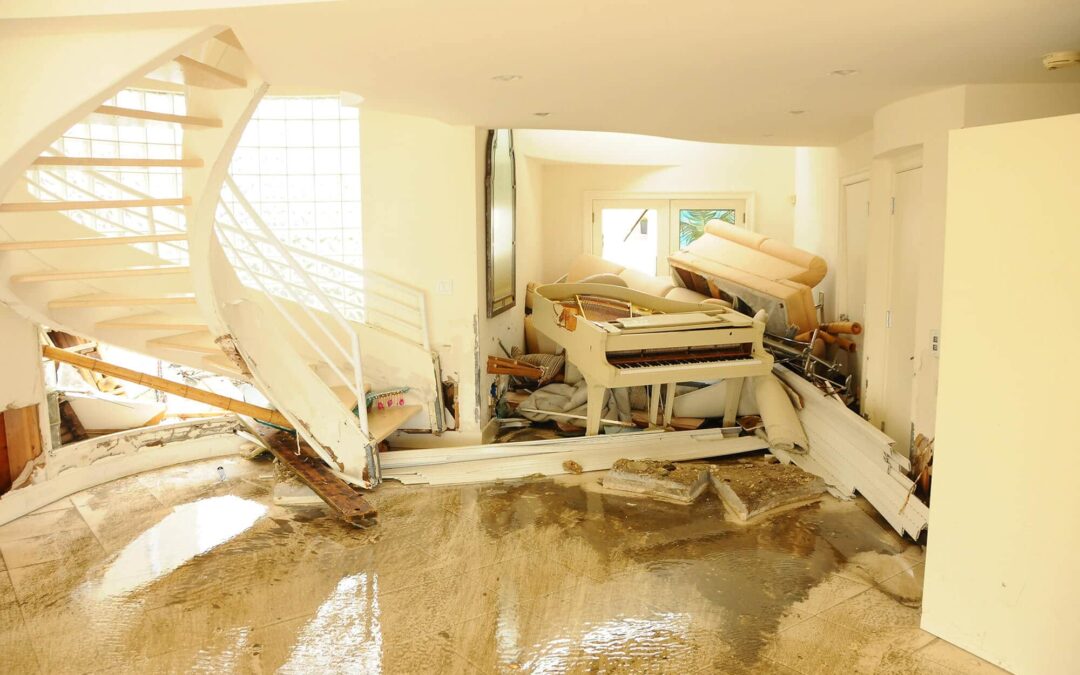What are the signs of water damage in your home?
Water damage is any type of damage that originates from water. Water can find its way into your home through flooding, rain, snow melting, and seepage. Depending on the extent of the damage caused by water, you may notice one or more signs that there has been water in your home. Some of these signs include:
– warped wood
– peeling wallpaper
– buckled flooring
– mold growth
– water stains on ceilings or walls
– musty odors
– water pooling
– damp carpets and drywall
If you have noticed any of these signs, it may be time to contact ASAP Restoration. We will address the issue with your home and provide a solution that will restore your home to its pre-damage state. If water has been seeping into your home for an extended period, you should also consider contacting ASAP Restoration for mold removal service as well. This will help prevent potential mold growth from occurring. Restoring the structural integrity of the affected areas is important because this ensures that there was no further damage done by the water damage. In addition to restoring structural integrity, we can also assist in repairing or replacing broken appliances
What should I do if my home suffers from severe water damage?
First, contact a professional! If water damage is left untreated for too long, not only does it lead to structural problems in your home but also health concerns for you and your family.
Things you should avoid doing:
– Do not use harsh chemicals such as bleach that will only make the problem worse and make the mold grow back stronger.
– Avoid using a fan to dry up water because this can cause excess moisture and bacteria to become airborne and circulate in your home.
– Do not try to power through and clean up the water yourself unless you are trained or prepared for how serious this issue is without proper equipment.
What to do as soon as possible:
Take all necessary precautions such as turning off the electricity and gas. Then, collect any items that got wet and remove them from your home for further treatment. Next, increase ventilation in your house by opening windows and doors to allow water vapor to escape the home. Lastly, contact a restoration company like ASAP Restoration that specializes in water damage. We will come out and perform an assessment of your house and let you know what we think it will take to get the job done.
How to clean up a minor water leak?

If you have a small water leak in your home, there are some basic steps you can take to clean it up yourself. Be sure to take precautions against electrical shock and use proper safety gear when working with water.
-turn off the electricity to the area you’re working in
-remove any furniture or items from the area that may get wet
-use a bucket or container to collect the water
-use a mop or towel to soak up any excess water
-dry the affected area with a fan or heater
How to clean up a major water leak?
If you have a major water leak in your home, there are some basic steps you can take to clean it up yourself. Be sure to take precautions against electrical shock and use proper safety gear when working with water.
- Shut off the water source. If possible, turn off the water at the main valve. This will help minimize the damage done by the leak and make it easier to clean up.
- Remove excess water with a pump or wet vac. If there is a lot of standing water, use a pump or wet vac to remove it as quickly as possible.
- Dry out the area. Use fans and dehumidifiers to dry out the area around the leak. This will help prevent mold and mildew from forming.
- Repair the leaky pipe or appliance. Once the area is dry, repair the leaky pipe or appliance to prevent future leaks.
- Call a water damage restoration professional. If you have little experience with emergency repairs or there is extensive damage to the area, call ASAP Restoration for assistance.
Tips for preventing future flooding disasters
If your home has been damaged by a flood, there are some things you can do to help prevent future damage from happening:
- Install a sump pump and make sure it’s in good working order.
- Have your home checked for proper drainage and correct any problems.
- Make sure your gutters are clean and functioning properly.
- Keep an emergency kit prepared in case of another flood.
- Stay aware of weather conditions and forecasts that could lead to flooding in your area.
- If you live in a low-lying area, consider purchasing flood insurance.
- Elevate important items in your home that could be damaged by water (such as electronics, documents, and furniture).
- Know your home’s flooding history and stay alert for any future floods.
- If you live in a flood zone, keep disaster supplies on hand.
- Create an evacuation plan with your family so everyone knows what to do during a flood or other emergency.
8 Tips For The Aftermath Of Flooding In Your Home
No one expects their home to be flooded, but when it does happen, it’s important to know what to do. The first few hours and days are crucial in preventing long-term damage to your property. Here are 11 tips for the aftermath of flooding in your home.
- Assess the damage and take pictures.
It’s important to document the damage as soon as possible. Take photographs or videos of all the damaged areas, including the floor, walls, furniture, and personal belongings. This will help with insurance claims and repairs.
- Remove all water and moisture as quickly as possible.
The faster you remove the water and moisture, the less damage there will be. Pump out any standing water immediately, then use dehumidifiers and fans to dry the area.
- Use baking soda on household items to kill bacteria without chemicals.
Baking soda is a natural absorber of odors, so using it for flood damage restoration will help remove smells as well as mildew or mold caused by humidity. Leave open boxes in rooms with lots of moisture, but keep them away from electrical outlets since baking soda can also act as an insulator if exposed to enough heat. When you’re done with your cleanup projects, sprinkle the leftover powder into garbage bags – it makes excellent scouring powder for appliances and other surfaces that need cleaning!
- Remove all rugs, carpet, and cushioning that come into contact with floodwater.
Salvaging any of these items will expose them to dangerous mold spores. They should be thrown out immediately, but if you have the time, salting them can help kill off some of the spores before you dispose of your items. Salt won’t disinfect anything – it functions as a desiccant that draws moisture out of organic material to quicken its decomposition – but it’s better than nothing! You could also try placing your items in or near an oven set on “warm” for several days (turn it off periodically to check for safety). Just keep in mind that baking soda (see #3) is more effective at removing smells.
- Disinfect everything that came into contact with floodwater.
This includes furniture, walls, floors, and any wet personal belongings. Use a commercial disinfectant or a homemade mixture of one part bleach to 10 parts water. Be sure to follow the instructions on the disinfectant carefully – some require you to let the solution soak in for a certain amount of time before rinsing off.
- Clean all surfaces with soap and hot water.
Even if they weren’t directly in contact with floodwater, surfaces can still harbor dangerous bacteria. Soap and hot water will help remove any traces of contamination. Pay special attention to areas where moisture is likely to accumulate, such as doorknobs, cabinet handles, and drawers.
- Open cabinets cautiously.
Wet wood expands as it dries, which can cause damage to the surrounding areas of your cabinetry.
- If floodwater contaminated your appliances, shut off power at the circuit breaker and dispose of them immediately.
They will need to be thoroughly cleaned (and possibly replaced) before they can be used again since floodwater may have introduced mold or other debris into critical components like switches or compressors. Gas-powered appliances should also be checked for gas leaks – even if they were submerged in water! Above all else, make sure no one attempts to use any electrical equipment until you are positive it is completely dry and safe to use – taking short-cuts with electrical safety can be deadly.
These are just a few of the things you’ll need to do to restore your home after a flood. With some hard work and patience, you can get your life back to normal again!
If you’re dealing with water damage, don’t try to do it all yourself. Call in the professionals at ASAP Restoration for help. We have experience in water damage restoration and can help get your home back to its original condition as soon as possible.

